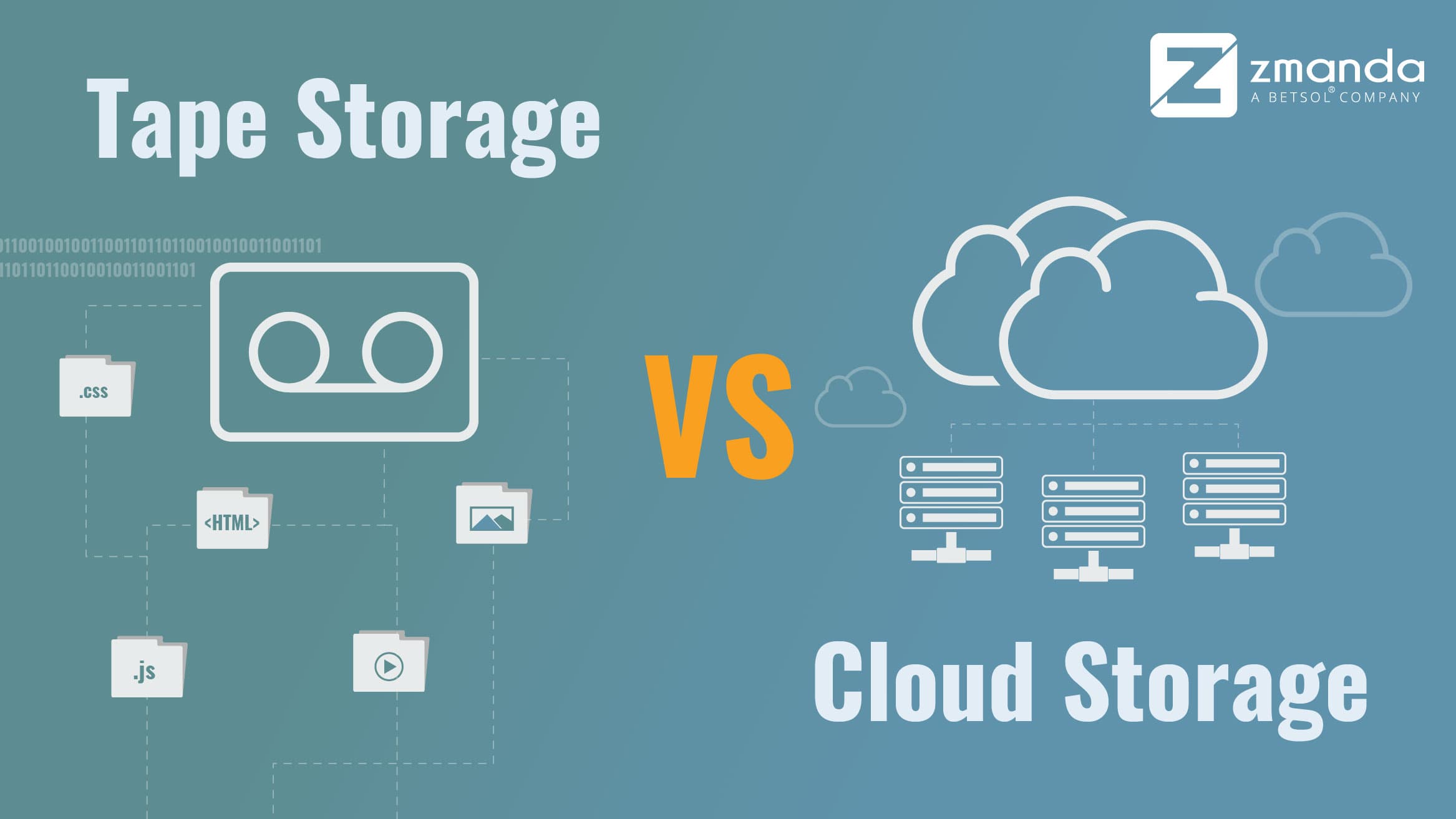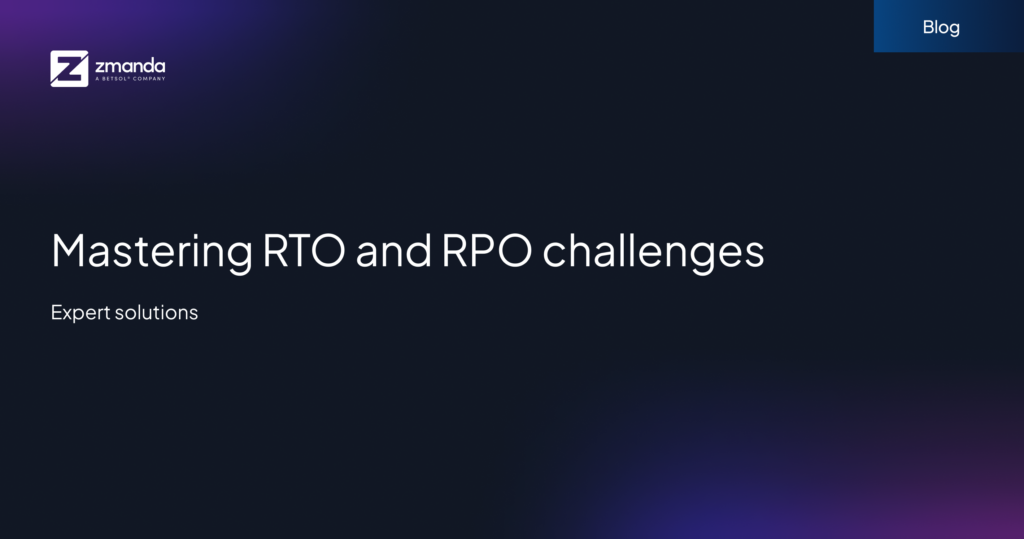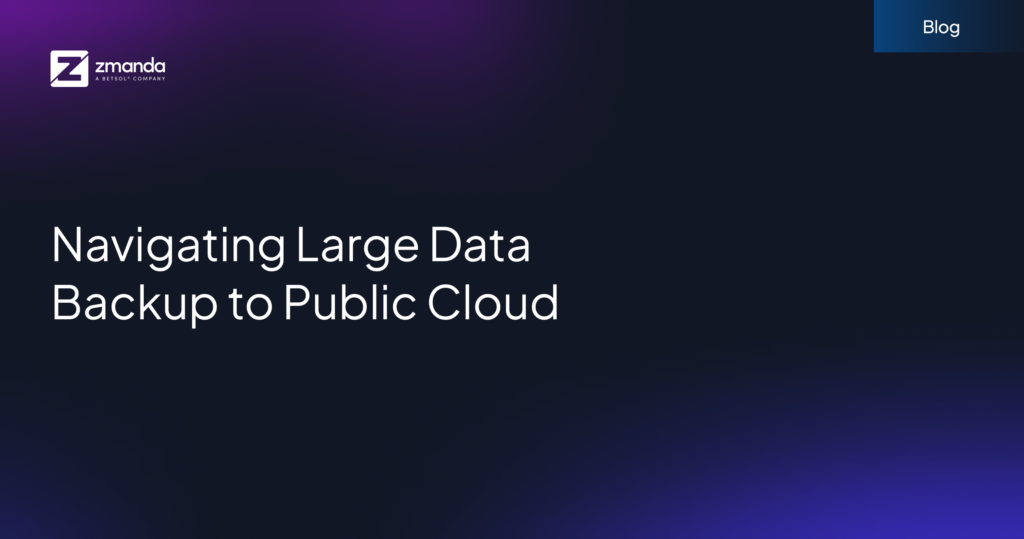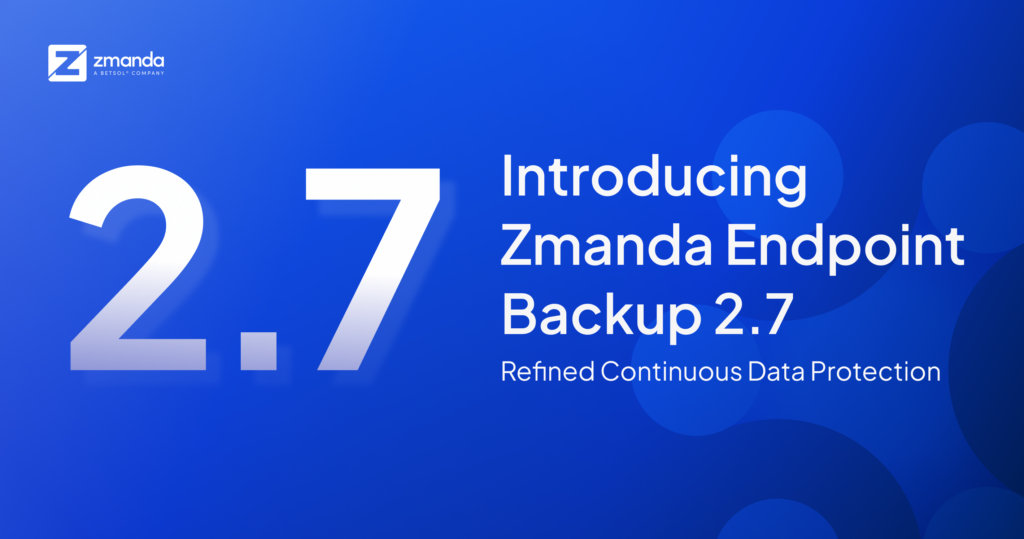
As data continues to grow and backup becomes more critical, businesses must weigh their options with two main factors in mind: cost and security. But when it comes to cloud storage and tape storage options these two factors seem like contrasting ideas
The Cloud is secure but is it cost-effective?
Tapes are cheap but are they reliable?
Apart from those factors, once deployed, both options will need new ways of working and the creation of new policies to ensure your data is safe and secure.
It’s true that Cloud offers benefits that other data backup options don’t, but it has its own drawbacks. Though tape is older technology, it is a feasible data backup and storage option when used with the Cloud. Together, tape and Cloud can significantly improve your backup and storage capabilities.
All about Cloud Storage and Tape Storage:
Tape Storage:
Tapes are extensively used for the on-premises and long-term off-site retention of data. It is a common misconception that tape is out of date and a dead storage method, but the truth is that tape is still very much alive. It has tremendous value and advantages. Tapes are reliable, longstanding, and well-understood storage medium. It has a greater capacity to store data without any need for electricity. There are several competing standards for tapes you to choose from. Some of them are LTO, DLT-S, DAT, AIT, and QIC. There are many vendors who will provide the tape library that would fulfill your requirements. SpectraLogic, Hewlett Packard, and IBM are the names of the few vendors.
Tapes are not completely out of fashion; they have their advantages:
Tape Storage Pros:
1. Easy Storage
Most tapes offer a large storage capacity in a relatively small physical package. Tapes have evolved and the versions still in use have a capacity that goes up to a terabyte. Tapes can reduce data to a smaller size when compared to hard drives. This makes tapes a cost-effective choice for companies that have large amounts of data to store.
2. Safety
Tapes are offline, making them one of the most secure ways to store data! Data stored on tapes are not connected to a network, apart from when reading or writing operations are performed. These files are stored offline inside a tape library in a secure environment. Since tapes stay in the library, there is no scope of tape damage, as a result of handling. This makes data stored unaffected by ransomware or network-based malware, unlike cloud storage.
The actual issues are dual. For most organizations (like those in higher education and government industries) using tape for backup, there is a certain level of comfort. The reason? Tapes have been around so long that it is a back-office operation with low visibility. For these organizations, moving to the Cloud would require new processes and copying all those old tapes to the Cloud.
3. Low Overall Costs
Costs of tapes are less in terms of electricity and administration. Storage Media is also cost-effective in the long-term. As the amount of data increases, the value of tape archiving really comes into play. Investing in the tape drives and the storage media doesn’t make much sense if the storage needs are under 50TB over the long term. But, once you get into the petabytes of data, the cost benefits of tape backup and archiving comes into the picture.
When compared to using the Cloud, the initial investment for the tape drive and media are much higher. But, those are one-time costs, while cloud services are charged monthly. Even if you are storing the only 20TB of data, the long term costs of storage for tape become lesser if spread out over time.
4. Simple Replication
Big businesses can effortlessly make physical copies of mission-critical tape backups. As enhanced security, many formats offer advanced encryption features that improve the utility of each individual backup.
Cons:
1. Expensive Multi-Site Storage
Anything can happen to the location you store your tapes, in that case, storing one more copy in another location is a good idea. As discussed earlier, tapes are not that costly, but it may be very expensive to transport the tapes from one data center to the other safely.
2. Power & Cooling Requirements
To keep the tapes stored securely for decades, you need an additional set up. The data centers need to have proper controls for humidity, sunlight, contaminants, and temperature.
3. Natural Disasters Are a Threat
Unless your tapes are stored in a metal bunker underground, there are high chances that they can be destroyed in hurricanes, storms, and floods.
4. Technology Refresh Costs
Tapes are not expensive, but apart from them, you will also need to set up appropriate infrastructure, including tape drives, archive software, and tape libraries. Moreover, you need to maintain this entire infrastructure beyond the time of supplier support, which can lead to an increase in costs.
While tapes have some prominent advantages over other media, many businesses consider Cloud-based storage solutions to provide a better return on investment.
Cloud Backup and Storage
Fuelled by reasonable bandwidth and capacity optimization technologies, cloud backup is becoming the new choice against portable media, such as tape.
With the help of cloud storage, you can save data and files in an off-site location. You can access this data either through the public internet or a dedicated private network connection. A third-party cloud provider is responsible for the data that you transfer off-site for storage. The provider hosts manage, maintains, and secures the servers and associated infrastructure. They also ensure you have access to the data whenever you need it.
Pros:
There are several advantages to using cloud backup and storage options. They include:
1. Reliability & Efficiency
Cloud providers utilize state-of-the-art technology, such as compression, encryption, data deduplication, disk-based backup, server & storage virtualization, application-specific protection, ETC. They are more in Statement on Auditing Standards 70-certified data centers. These providers offer 24/7 monitoring, management, and reporting. Furthermore, no need to worry about upgrades and migrations; the burden of the backup infrastructure lies with the service provider.
2. Scalability with Capital Savings
Cloud storage can be low-cost, especially for small businesses without voluminous data to protect. Public Clouds remove scalability issues, so no headache of having enough on-premises storage capacity for your data. Moving backups to the Cloud is a great deal, as you do not have to worry about any local ransomware attacks, as your files are off-site.
3. Improved Recovery Time for Small Data Sets
In the case of tapes, an operator would need to recall the tape, load it, locate the data, and recover the data. Conversely, file recovery from Cloud storage is quicker. It does not require physical transport from the off-site location. Files to be recovered are located and streamed over the WAN connection, which saves time and eliminates the need for a local tape infrastructure.
4. Accessibility
Cloud backup is an awesome choice for organizations that cannot afford the investment and maintenance of a separate disaster recovery (DR) infrastructure. Off-site data copies -- accessible from any internet-connected device/location -- provide an added measure of insurance during a regional disaster.
5. Broader Protection
Cloud backup can make a good option for protecting laptops or tablets that are not traditionally part of on-premises enterprise backup. Cloud repositories can replace the need for tape vaulting.
Cons:
1. Seeding Data and Full Recovery
Depending on the total capacity of data, the first full backup and full recovery of site data could prove to be too time-consuming.
2. Cost
Cloud storage delivers a cost-effective, scalable alternative to storing files on on-premise hard drives or storage networks.
Cloud storage helps organizations cut costs by eliminating in-house storage infrastructure. But Cloud storage pricing models differ. There are Cloud storage providers who charge monthly the cost per gigabyte, while others charge fees based on stored capacity. Fees vary widely; you might end up paying $1.99 or $10 for 100 GB of storage per month, based on the provider you choose.
Providers may also factor the number of users accessing the data, how often they access data, and how far the data has to travel into their charges. They may also charge for based the types of data stored and whether the data requires added levels of security for privacy purposes and regulatory compliance.
3. Size Limitations
Depending on bandwidth availability, every organization has a threshold for the reasonable capacity of data that needs to be transferred daily to the Cloud. Bandwidth is often a major issue for larger organizations. In recent years, enterprises have been using technologies like disk targets and data reduction methods to reduce their backup windows. Moving data to the Cloud slows such processes. Companies can overcome this problem by increasing connection bandwidth.
4. Administrative Control
Being able to view your data, access it, and move it at will is one of the common concerns with Cloud resources. Offloading maintenance and management to a third party offer advantages, but also can limit your control over your data. No control of the storage in the long run. Many industries want complete management of their data, and Cloud makes that tricky, if not impossible.
5. Regulatory Compliance
Certain industries, such as healthcare and finance, have to comply with strict data privacy and archival regulations. This prevents companies from using Cloud storage for certain types of files, such as medical and investment records. If you can, choose a Cloud storage provider that supports compliance with any industry regulations affecting your business. How will you decide which one suits you the best?
Whether you are interested in backing up your data with the Cloud or tape, Zmanda can help. Contact us today to learn more about how to backup your data with Zmanda.
Wrap-up!
Whichever option you select, keep in mind that, the new Cloud technology will most likely stand out against old ways of backing up and storing data. However, tape still has some benefits. Here, we suggest you two options:
Hybrid Approach
You are better off using a combination of both tape and Cloud bandwidth. This is called a hybrid backup solution. It would allow you to have your most frequently accessed files stored on tape drives while basic information is always available through the Cloud. What is stored locally can be customized to your business needs by your information technology professional.
3,2,1 Strategy
Backup is vital in a disaster recovery strategy. Usually, businesses that fail to back up their data are unable to recover from a disaster event. 60% of businesses who experience data loss shut down within 6 months of the event. There is no such thing as a perfect backup system, but the 3-2-1 approach is a great start for the majority of businesses. A 3-2-1 strategy means having at least 3 total copies of your data, 2 of which are local but on different mediums (read: devices), and at least 1 copy offsite.


